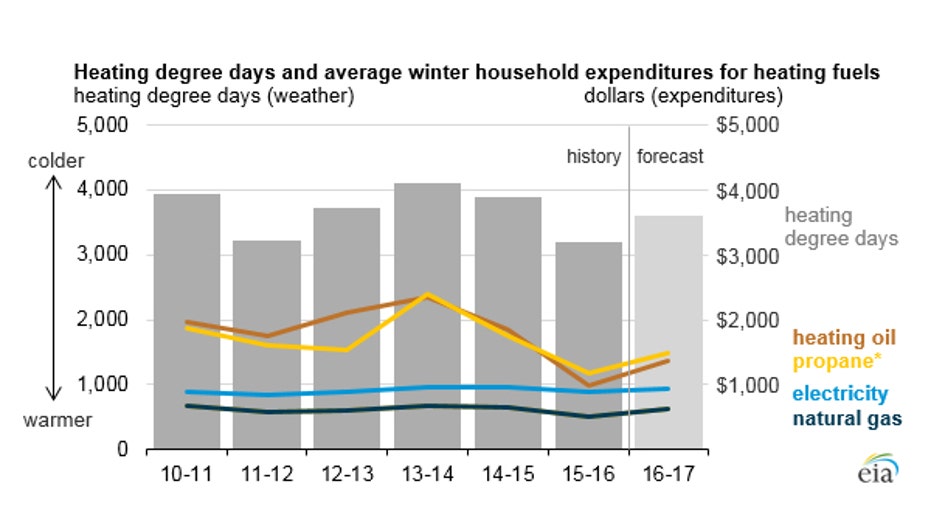Heating Bills Will Get More Expensive This Winter

Winter will be more expensive for homeowners this year, but there’s a silver lining.
Heating bills are on pace to increase for most U.S. households compared to last year’s costs, according to the Energy Information Administration’s Winter Fuels Outlook. The agency noted that heating expenditures were especially low a year ago. So even with the expected increase, this year’s heating bills will remain below recent winters.
The EIA projects the cost of heating a home using fuel prices and the NOAA’s temperature forecasts. The NOAA said the winter months will be 13% colder than last year but 3% warmer than average temperatures over the last 10 years. The cost to homeowners is also dependent on the size and energy efficiency of their homes.
Analysts believe electric heating prices will remain fairly stable. The cost of non-electric heating, such as natural gas and oil, is poised to climb.
Natural gas is the cheapest heating fuel, and nearly half of all U.S. households use it. Those homes will spend an average of $635 on heat from October through March, a 22% increase year-over-year. However, a $635 average bill for the entire winter would be even with the five winters leading up to last year.

The 39% of U.S. homes using electric heat, mostly in the South, should expect to shell out $945 on average this winter. That’s a 5% gain over last year.
Heating oil ($1,370) and propane ($1,485) are the most expensive heating fuels and are forecasted to show the largest increases of 38% and 26%, respectively. Oil, though, will still be 32% cheaper compared to what homeowners paid during the winters of 2010-11 through 2014-15. U.S. oil prices remain under pressure from a supply glut, despite climbing about 90% from a 52-week low of $26.21 a barrel in February.
Last year, Americans benefited from warmer weather and relatively low energy prices, including oil and natural gas. Heating demand plunged to the lowest level in at least 25 years, the EIA says.



















